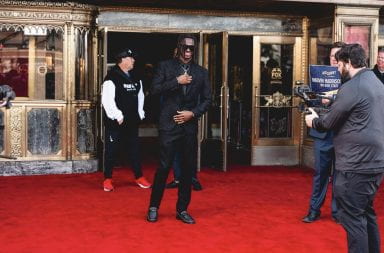Athletes aren’t the only group on campus receiving iPads.
All 36 students in the 2013 class of the Master of Business Operational Excellence program at Fisher College of Business received the Apple product last semester and can keep the tablet after they graduate.
The students received iPad 3s in November as part of the $48,500 premium tuition they pay yearly, said Bob Mick, program director at the MBOE.
“(T)he program is actually saving money by using the iPads,” Mick said in an email. “Historically, the cost of providing paper materials was on average $500 per student.”
Third generation iPads are being phased out in favor of the newer iPad 4, and the iPad 3s are priced between $579.99 and $779.99 on Best Buy’s website.
Mick said he purchased the iPads at $526 each, a bulk discounted rate. The MBOE program “prepares high-potential managers for leadership in … leading service and manufacturing companies,” according to the program’s website.
Peter Ward, chair of the Department of Management Sciences at Fisher, said the change made sense to him as the MBOE instructors had been using iPads for a few years, so it was logical to have students use them too.
“One of the things that the college wants to do is learn from our experience,” he said. “Our IT people were challenged to do this. It was the first time they had done it, so they had to learn about it, so now they have that capability. I would not be surprised to see other programs come onboard, particularly ones that, like us, have big print expenses now.”
As part of the Digital First Initiative, which works to promote multimedia and digital education at Ohio State, the OSU’s athletic department budgeted $400,000 for all athletes to receive iPads, but Ward said the iPad program with MBOE is not affiliated with the Digital First Initiative, though there was some collaboration.
“Our IT people actually interfaced with that Digital First Initiative,” he said. “We didn’t get funding from Digital First, but … it’s a cooperative venture.”
Switching to iPads enables instructors to keep all of their material, whether it is visual or textual, in one place, Ward said. The switch also enables instructors to make their classes more interactive and better measure their students’ comprehension.
“So we can put a little quiz together and ask them some key points about what we just talked about for the last hour and they can quickly answer that,” he said. “And then the instructor sees, ‘OK look…80 percent of them don’t understand what I was talking about, so let me go back and cover this point again.'”
Some said introducing more technology into education has its drawbacks.
Philippe Laroque, a third-year in strategic communication, said more technology is a “double-edged sword” and might not always work as smoothly as planned.
“It’s more efficient, but you’re taking a chance on whether or not that technology is going to last,” he said. “It leads to us being more easily distracted, because what allows us to be more efficient also allows us to look at videos on YouTube, allows us to talk to our friends on Facebook, allows us to tweet.”
Gary Butler, an executive in residence and lecturer in the MBOE program, said iPads were chosen for current students, but that might change in the future.
“You may very well find that as technology changes and the needs of the students change, you may have to change the platform,” Butler said. “One of the drawbacks of the iPad is that it doesn’t do Adobe Flash, and I run into that more times than I’d like to.”


